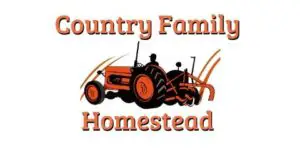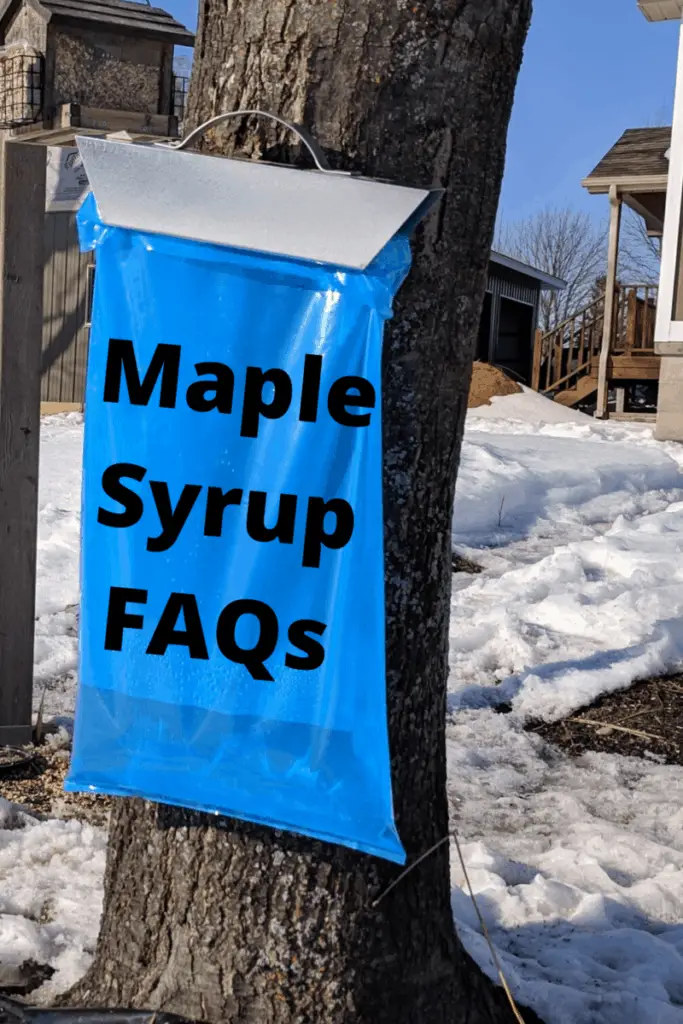Making maple syrup is a delicious way to take advantage of having a maple tree in your yard. Even maple syrups labeled as “natural” in the local grocery stores pale in comparison to homemade maple syrup—but can you make maple syrup from just any type of maple tree?
You can make maple syrup out of any maple tree species. The significant difference between various maple trees is the sugar concentration within the sap, which affects the syrup’s overall sweetness, making some trees better candidates than others.
No matter which maple tree you have available, you can use it to make maple syrup, provided you have all the right information and follow the proper steps. Keep reading to find out everything you need to know about the homemade maple syrup process.
The Ideal Maple Trees to Tap to Make Syrup
Even though you can use any maple tree to make maple syrup, not all maple trees are created equal for producing the sweetest syrup. Syrup flavor largely depends on sugar concentration, the weather and climate the trees grow in, and the amount of time the syrup boils.
You can actually make syrup from some trees other than Maples such as Walnut or Birch but here are the most commonly used maple trees for making maple syrup:
| Maple Tree Species | Information About Each Species |
| Sugar Maples | – Most commonly used for maple syrup – Have the highest concentration of sugar – Longest sugaring period – Produce the largest amount of syrup |
| Black Maples | – Taste similar to sugar maples and yield about the same time of year – Found in the Midwest |
| Red Maples | – High sugar content, but not as high as sugar maples-1.5-2% – Grow in moist soil – Short sugaring season that alters its taste |
| Silver maples | – Also have a short sugaring season – Lower sugar content-1.7% – Yields a thin, light-colored syrup – Produces a sandy consistency of sugar |
| Norway Maple | – Similar in sugar content and taste to sugar maples – Abundant species that can tolerate a variety of climate conditions |
| Boxelders | – Mainly found in Northern Canada – Doesn’t have as much of a maple flavor as other syrups – Lower sugar content, requiring more gallons of sap to yield |
| Bigleaf Maple | – Found in Alaska and the Pacific Northwest region – Requires cooler/freezing temperatures to thrive aka: the Pacific Northwest trees not always ideal candidates for making syrup |
| Bigtooth Maple | – Found in Western US – Similar to sugar maples – Require daytime temps in 40s and freezing temps at night to thrive |
| Rocky Mountain Maple | – Native to the Rocky Mountain region – Does not produce ideal tasting syrup in spring |
| Gorosoe | – Commonly used maple tree in Korea – Sap not boiled down – Not as sweet-resembles more of a green tea taste – Known for its health benefits |
How to Identify a Maple Tree for Syrup
Identifying whether your tree is a maple tree or not can be challenging with all the different maple tree species. Looking at the leaf color or its size is not the best way to identify a maple tree. Instead, take a look at the bark and the way the leaf is shaped.
| Leaf Shapes | Descriptions |
| Deeply-lobed leaves | – Seen on Japanese maples – Lobes do not start at a single point – Do not have their own stems |
| Compound leaves | – Seen on the box elder and the paperbark maple – Have 3-5 leaflets per leaf |
| Fuzzy | – Seen on a silver maple – Soft white layer on the leaf’s underside |
| Large, 5-lobed leaf | – Seen on the sugar maple and the Norway maple – Has large teeth shapes and rounded sections between lobes – Norway maples have a milky substance when the stem gets ripped off, whereas sugar maples do not |
| Roughly toothed | – Seen on a red maple – Has a dagged, saw-like perimeter |
Additionally, you can use the bark as another great indicator:
| Bark Types | Maple Trees Associated with Bark Types |
| Gray, scaly, and flaky | Associated with silver maples |
| Smooth, red, and paper-like | Found on paperbark maples |
| Wide, inconsistent strips | Associated with sugar maples |
| Skinny, scaly bumps | Commonly found on Norway maples, box elders, and red maples |
Maple Syrup Book Resources
This book from Amazon will help anybody living in the Northeast identify not only Maple trees but others as well.
This book is helpful for those wanting to make maple syrup from their backyard trees
Tapping Maple Trees for Syrup
Now that you know which maple trees are best suited for syrup and know how to identify maple trees, we’ll go over how to tap maple trees and everything you need to know about the process.
When is the Best Time to Tap Maple Trees?
To tap a maple tree for sap, the sap needs to flow through the tree. For that to happen, there need to be temperatures switching back and forth between thawing and freezing. The best scenario to tap trees is when temperatures are in the 40s during the day and below freezing at night. This fluctuation in temperature varies by region.
Here’s a quick video of me explaining the earliest in the season I’ve ever tapped a tree:
Tools Required to Tap Maple Trees
- A hammer
- Drill with a ⅜” or 7/16″ drill bit
- Containers or buckets with lids to collect syrup
- Big boiling pan (large surface area is better)
- Candy thermometer or hydrometer
- Tapping spouts or spiles
- Syrup filter or wool felt
How to Tap a Maple Tree
- Before tapping a maple tree, clean your buckets or containers with a bleach solution to eliminate any bacteria.
- Drill a hole into the tree at a slight angle 1 1/2 – 2 inches deep and about 2-4 feet off the ground.
- Note: Do not attempt to tap a tree that is 10″ across or less. It’s too young and not ready to be drilled into. If you do, it could die. I actually use 12″ for as a minimum size before I tap.
- Use the hammer to pound in your tap. Don’t hammer too hard, or the bark will split, which will yield less sap. You only need to gently tap it in.
- Hang a container or bucket from the tap immediately. Put a lid on to keep bugs and twigs from getting inside the sap.
- Empty the buckets or containers once per day. After collecting the sap, either process it immediately or keep at a cool temperature until you’re ready.
This video explains some guidelines for tapping trees:
This chart is a useful tool to figure out the number of taps you need for each tree:
| Tree Diameter | Number of Taps |
| Less than 10” | 0 (This will kill the tree) |
| 10-20” | 1 |
| 20-28” | 2 |
| 28” or larger | 3 |
My figures may be a bit more conservative than others you might find, but I like to stay on the safe side and make sure I’m doing any damage to my maple trees by adding too many taps.
It’s also important to know what normal sap should look like. Typically, it’s a transparent liquid. Toward the end of tapping season, the sap may look slightly cloudy. As long as it’s not overly cloudy, it’s safe to consume.
How to Convert the Sap into Maple Syrup
All that really goes into converting the sap into maple syrup are boiling and evaporation processes. It’s best to do the boiling outside over a wood-burning stove, if possible. Here are the steps to making maple syrup:
- Boil water in your large pan to determine the boiling temperature on your thermometer. It’s best to do this outside over a wood or propane fire.
- Pour your sap into your large pan. The larger the pan, the quicker the sap will evaporate.
- Add more sap as the water begins to boil off.
- Once the sap gets darker and boils with slower bubbles, you’re in the last stages of boiling. When this happens, use your candy thermometer to check the temperature. The temperature should reach 7 degrees Fahrenheit above the boiling point of water. This is the reason for calibrating your thermometer in Step 1. When the sap reaches that point, then you officially have syrup.
- Strain the syrup through the filter or wool felt twice.
- Pour into sterilized jars for long-term canning or refrigerate.
Note: Since evaporation occurs, you’ll need at least ten gallons of sap before beginning the syrup making process. On average, it takes about 40 parts sap to make 1 part syrup.
Here’s a video of me outlining the evaporation process over a wood fire:
Here’s a video of me outlining the evaporation process using a propane turkey fryer:
Making Homemade Syrup from Any Maple Tree
Now you know that any maple tree can be used to make syrup and how to identify which type of maple tree you have in your yard.
If it’s known for making sweet syrup, tap into it and make some delicious homemade maple syrup for your homestead! You’re going to enjoy your pancakes more than you ever have before.
Check out the Maple Syrup page here on this website for more how-to info on making your own maple syrup from backyard maple trees. Or check these related posts below:
Related Posts
Sources
https://files.dnr.state.mn.us/destinations/state_parks/maplesyrup_how.pdf
https://garden.lovetoknow.com/wiki/Maple_Tree_Identification
https://www.theartofdoingstuff.com/have-a-maple-treehow-to-tap-a-maple-tree-for-making-syrup/





